Search Results for 'Grammar School'
9 results found.
The first Galway golf courses
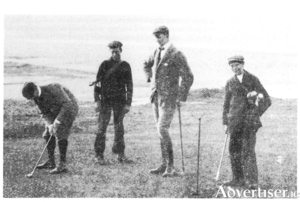
The first golf course in Galway was constructed by Lieutenant Colonel Jourdain, the last Colonel of the Connaught Rangers, on military grounds at Renmore Barracks, between the rifle range and Cromwell’s Fort, in 1893. Play was originally confined to military personnel, but then some members of the public were invited and it took off so well that the colonel and his friends were invited to lay out a course on Knocknacarra Hill.
St Nicholas’ Parochial School

This Church of Ireland school is situated in Waterside beside the courthouse and the Town Hall, The earliest existing school records date back to 1901 to the Model School which was situated on Upper Newcastle Road. It had opened in 1852 with 400 pupils, many of whom were Catholics. This proved too much for the then Catholic bishop who set out to make way for explicitly Catholic education in Galway. He invited the Mercy Sisters and the Patrician Brothers to set up schools here and made it a ‘reserved sin’ for Catholic parents to send their children to the Model School. This resulted in 199 pupls withdrawing and meant the end of multi-denominational education in the city.
The Royal Galway Yacht Club
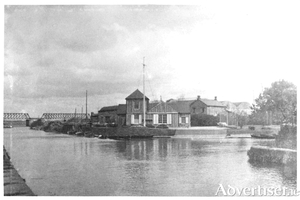
Our first illustration today is a drawing by MJ Tighe, architect, Galway, of the proposed new clubhouse for the Royal Galway Yacht Club at the corner of the Gaol River and the Eglinton Canal. The club was founded and received Royal Warrant in 1882. It was established as a social combination to promote sailing and rowing on the bay and lake, and the enjoyment of all the amenities of the Corrib Lake and River. They managed to survive and carry on for some years in difficult circumstances.
Galwegians RFC, one hundred years
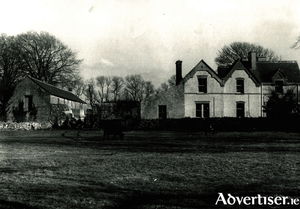
It is fairly certain that rugby football was being played in Galway before the formation of the IRFU, but the lack of surviving minutes of meetings or records makes it difficult to pinpoint the actual beginnings of some clubs. We know that in 1886 there were four clubs in existence, Queen’s College (now UG), The Grammar School, Galway Town, and Old Galwegians. These latter two clubs amalgamated in the 1909/10 season and called themselves Galway Town. They were a successful club. World War I and its aftermath ruled out competitive rugby but in the resumption, in 1921/22 they again won the senior cup and then, for some reason, decided to change the name again, this time to Galwegians RFC.
Galway Hockey Club, the first seventy years
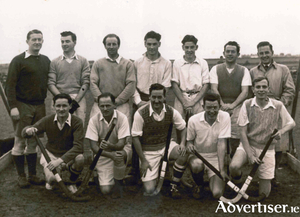
In 1951 Hastings Elliott Jephson was working in the ESB in Galway when he had the idea of setting up a hockey club in the city. He and his friend George Bevis decided to see if there was merit in this notion, so they simply went from door to door around town asking people if they would have any interest in playing the game of hockey.
Galway Grammar School, 1903
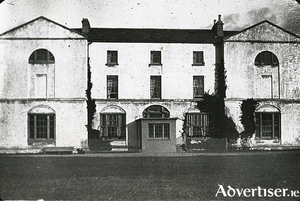
Galway Grammar School was a Protestant institution established under the Erasmus Smith Trust in 1669. It opened around 1675 and has been located at College Road since 1815. The 1950/51 school year was an eventful one when, in November of that year, a wing of the school was gutted by fire, happily, there was no danger of loss of life. Four months later a dormitory ceiling collapsed. The headmaster, George Coughlan, said that the collapse was caused by a 24 foot beam being charred through by a chimney fire. The beam brought down two other beams and half the ceiling. In many old buildings, beams went into chimney flues and successive chimney fires charred them until they came down. Neither incident occasioned an interruption in the school routine.
Galway was ready to receive SS Athenia survivors

In the early afternoon of Monday September 4 1939, Galway’s harbour master, Captain Tom Tierney, was amazed to be contacted by radio from a Norwegian freighter Knute Nelson. It was steaming south towards Galway with 430 survivors from the passenger liner SS Athenia, which had been torpedoed 250 miles north-west of Inishtrahull Island, off the Donegal coast. Many of the survivors needed medical attention. Was Galway in a position to offer aid and safety?
He went to jail to save his father
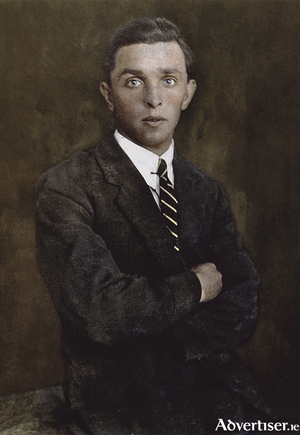
Hubert Reynolds was born in St Patrick’s Avenue in 1902 and shortly afterwards his family moved to Queen Street. He followed a family tradition when entering the service of the Railway Company as a 15-year-old in 1917. He was a boy porter and earned 10 shillings for a 60 hour week. From his boyhood, he took an active part in the National Movement and joined Fianna Éireann. During the War of Independence, he was engaged on communications work.
Connacht Rugby
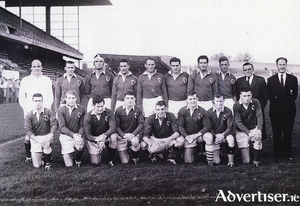
The first team to represent Connacht in rugby played against Leinster on December 8 1885. At that time, the game in the west was played by just a few schools. In the city, it was really only UCG and the Grammar School who played with any regularity. By the beginning of the last century the Jes, the Bish, and St Mary’s were competing. The growth of the game was interrupted by World War I and by the War of Independence, but it improved a lot after the truce.

